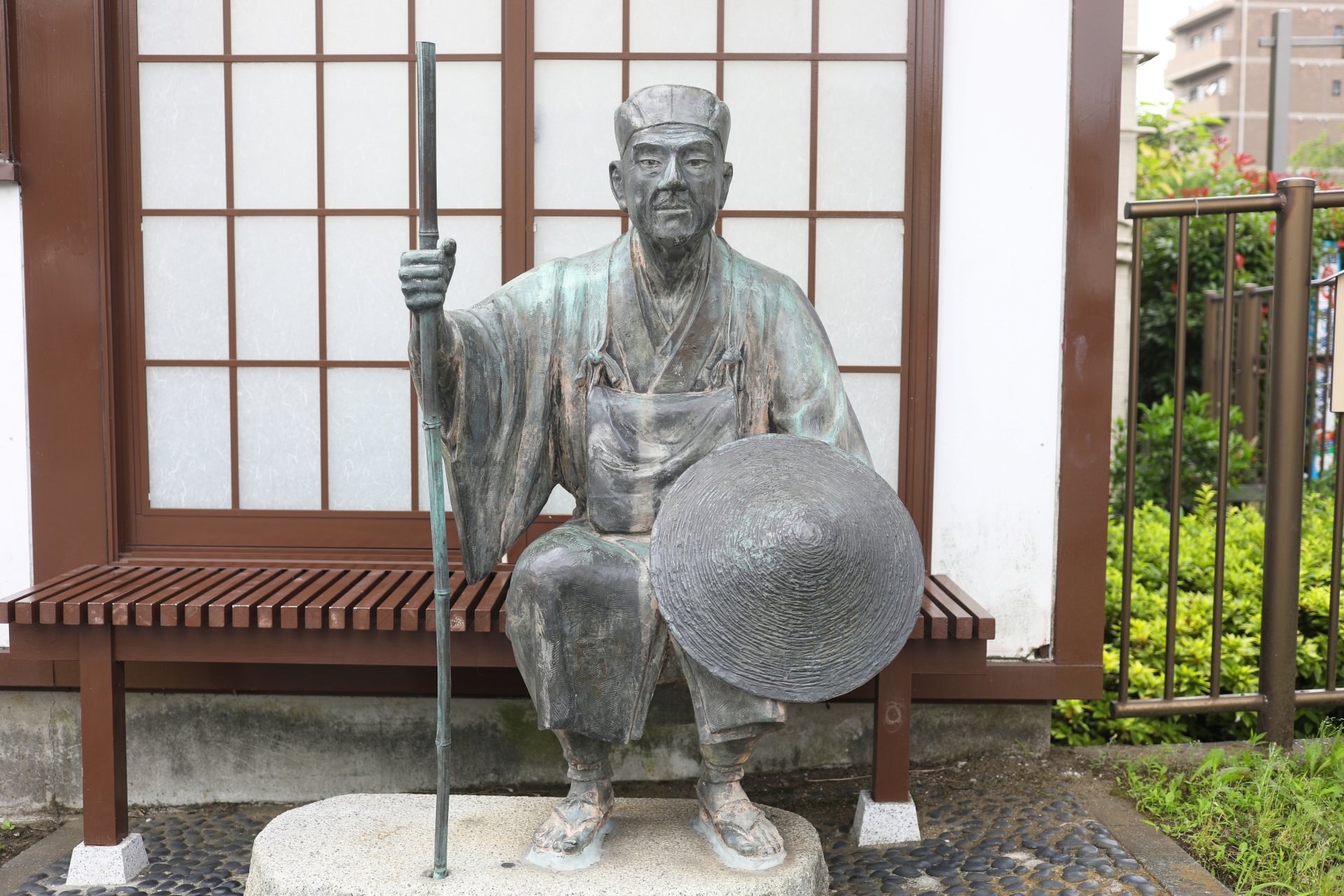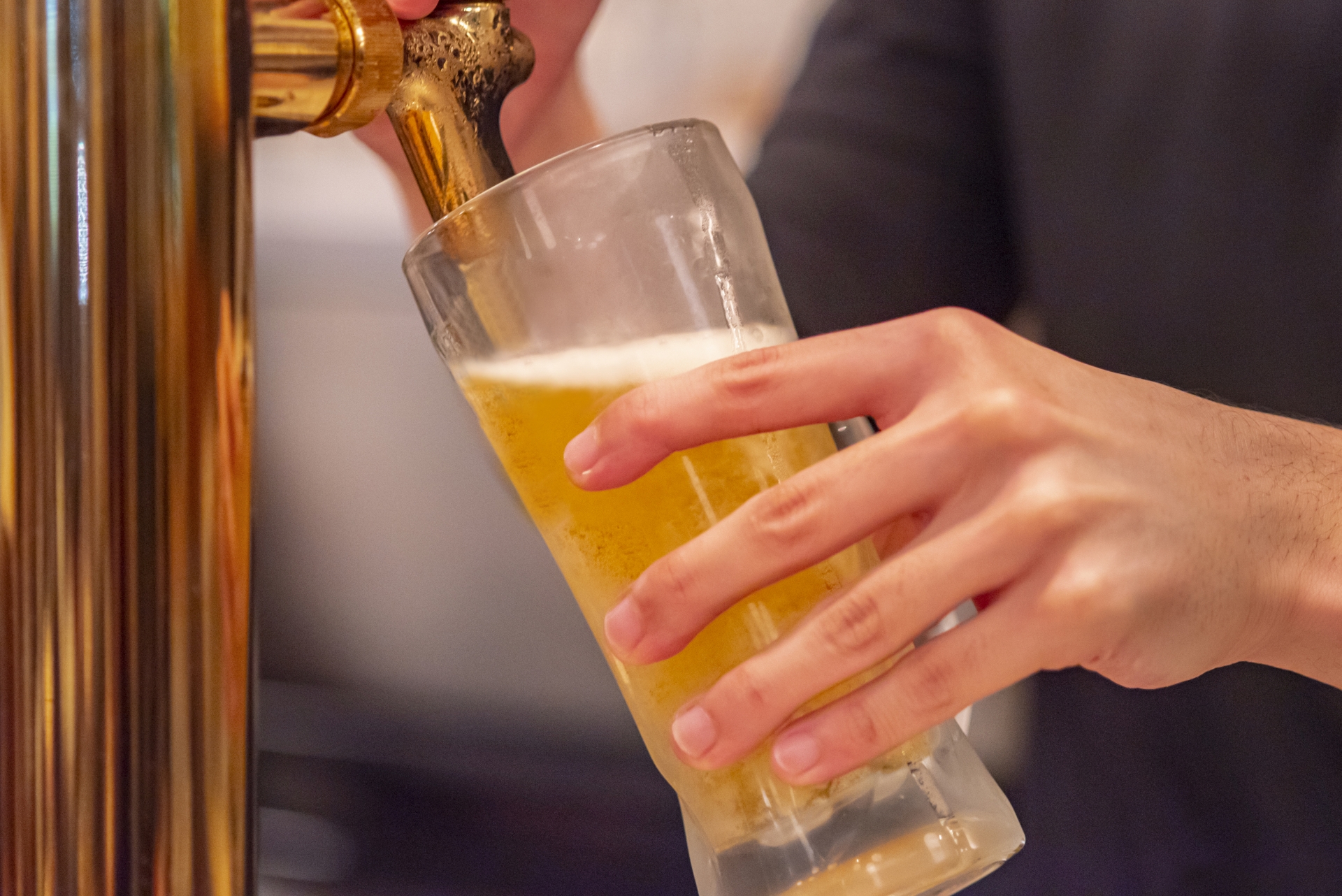
Mao Goto is a Japanese freelancer who was born in Hayama, Kanagawa prefecture, and raised in Tokyo. Since 2016 she lives in the Taito Ward, home to a lot of Japanese culture hotspots such as Asakusa, Akihabara, and Ueno. She has been interested in the field of English education in Japan and got her Master’s degree in March 2020. A lover of photography, travel, sweets, and cross-stitch. Contact her via Facebook.
This post may contain some affiliate links. When you click through and make a purchase we may receive some commission, at no extra cost to you.
Matsuo Basho, one of Japan’s most famous haiku poets, was active in the Edo period and wrote a travelogue of his travels in Japan called 奥の細道 (Oku no hosomichi). He is truly an essential figure in the history of haiku and Japanese literature. In this article, we will introduce what the Oku no Hosomichi is and how Matsuo Basho traveled around Japan by introducing some of his haiku works.
1. About Matsuo Basho
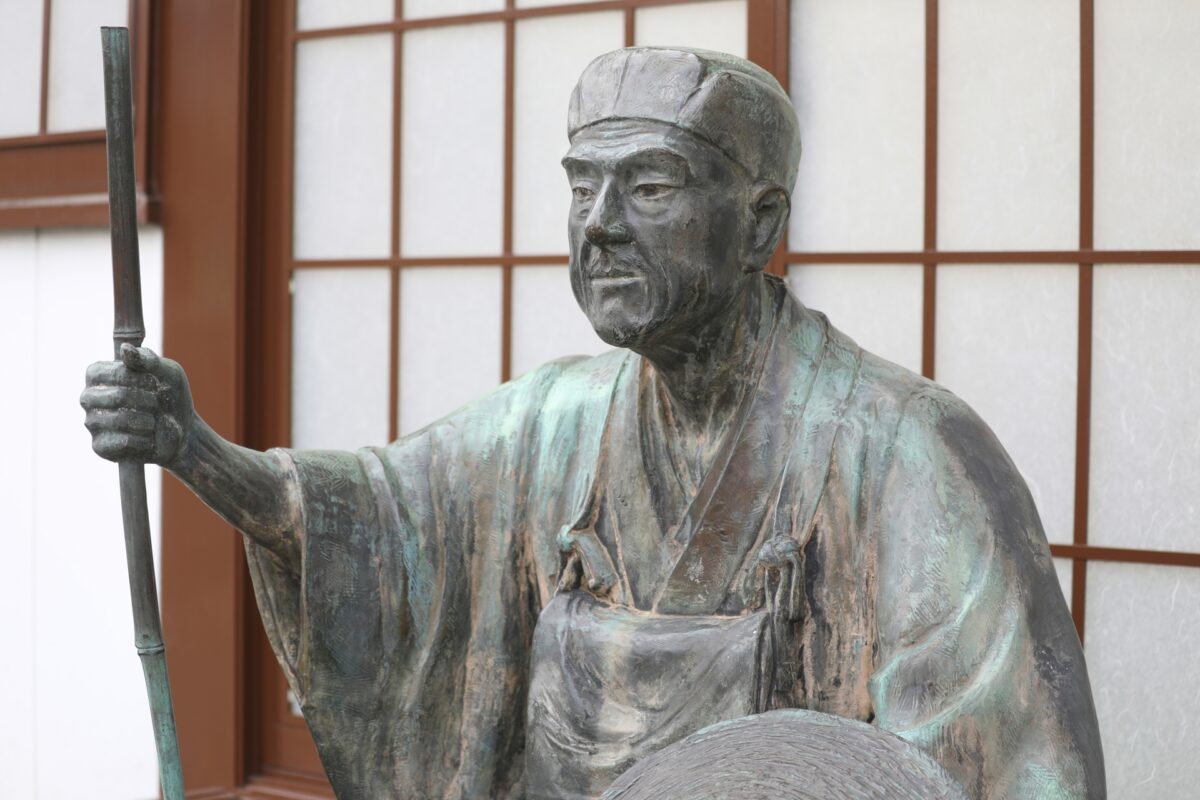
Matsuo Basho was a haiku poet born in Mie Prefecture on November 28, 1694, during the Edo period. Born into a low-ranking samurai family, he was the second son of six brothers and sisters and became familiar with haiku at the age of 19. At the age of 29, he moved to Edo (present-day Tokyo), where he began his career as a haiku poet.
At the time, there were already prominent haiku poets active in Kyoto, Osaka, and other areas, so Basho is said to have wanted to make a name for himself there, which was still an undeveloped area for haiku. However, Matsuo Basho was supported by only a few patrons, and since he was nearly unknown, he had to struggle very hard to make a living during his first few years.
Despite these difficulties, he became a professional haiku poet at the age of 35. Basho Matsuo established a residence in Nihonbashi, where he corrected haiku written by his customers and compiled haiku anthologies. At the age of 41, after gaining experience, Matsuo Basho prayed at Ise Shrine, stopped by his hometown nearby, and visited the grave of Basho’s mother, who had died. Afterward, he toured Yamato, Yoshino, and Mino before returning to Edo the following year. Five years later, at the age of 46, he traveled with his student to Tohoku and Hokuriku regions, and the travelogue he wrote about that trip became “奥の細道 as (Oku no hosomichi)”. In 1694, Matsuo Basho was traveling to Kyushu, but he fell ill and died in Osaka at the age of 51.
2. What is “Oku no hosomichi (奥の細道)”?

“Oku no Hosomichi” is a travelogue written by Matsuo Basho in the mid-Edo period in 1702. In 1689, Matsuo Basho accompanied one of his students, Kawai Sora, and together they traveled and walked around Tohoku and Hokuriku regions, starting from Fukagawa, Tokyo, in March and going around Ōou and Hokuriku, reaching the final point, Ogaki, Gifu Prefecture, in late August. It was a very long journey, covering a total distance of about 2,400 kilometers and taking about 150 days. It is said that on some days, he walked 30 to 40 kilometers in a single day.
Although there are various theories as to the purpose of this journey for Matsuo Basho, it is said that it was because he wanted to visit places famous for some haiku poems written in the Heian and Kamakura periods and to communicate with the great haiku poets of those days. He was influenced by the various people and haiku poets he met on his journey and produced many wonderful haiku poems. Today, Oku no Hosomichi is so well known throughout Japan that it is included in Japanese high school textbooks for Japanese. Oku no Hosomichi is a wonderful travelogue filled with Matsuo Basho’s experiences and feelings in Tohoku and Hokuriku regions.
3. Some Japanese places Matsuo Basho visited
Next, this article introduces some of the places where Matsuo Basho actually visited to write Oku no Hosomichi with his famous haiku poets in detail.
Hiraizumi
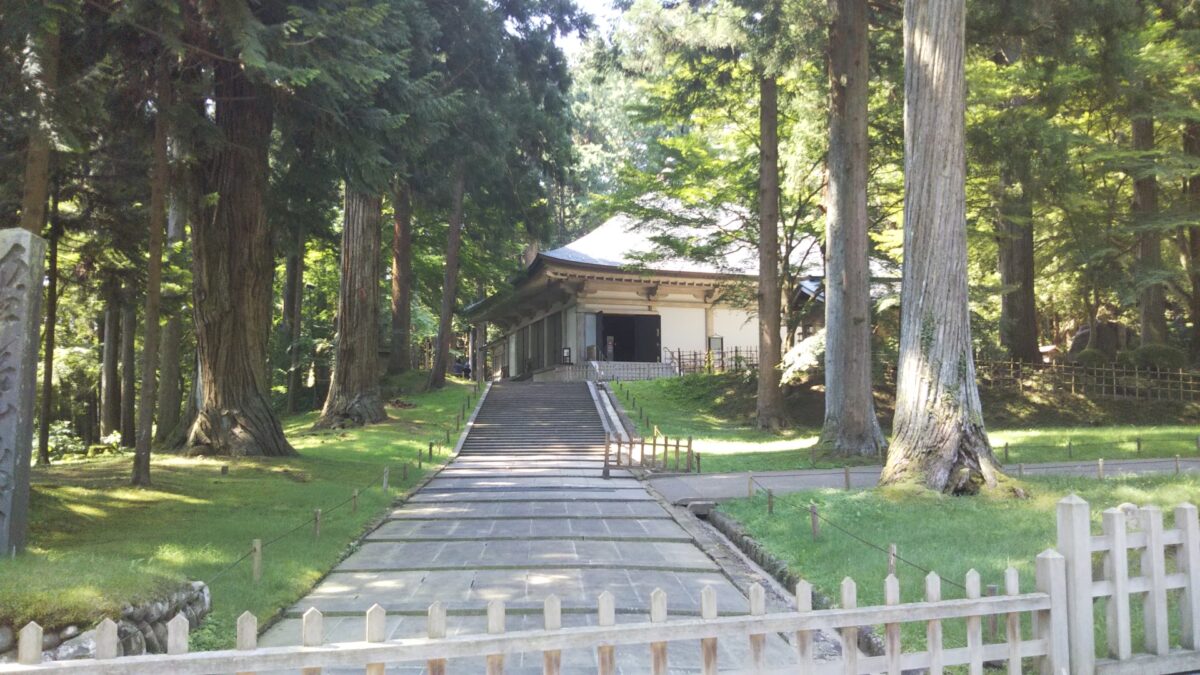
One of the famous places Matsuo Basho visited is Hiraizumi in Iwate Prefecture. Hiraizumi was the capital of the Oshu Fujiwara clan, which is now registered as a World Heritage Site. Takadate in Hiraizumi is famous as the place where Minamoto no Yoshitsune, a military genius who lived before the Kamakura period, finally committed suicide after being cornered by his brother Minamoto no Yoshitomo, who held the greatest power at the time. Matsuo Basho visited the area and composed this haiku.
夏草や 兵どもが 夢の跡
Natsukusa ya Tsuwamonodomo ga Yume no ato
(Meaning: This land where warriors once fought for glory and honor is now only overgrown with summer grass. The past is nothing but a fleeting dream.)
Matsuo Basho wrote this haiku while experiencing the emotions of the warriors of his time, and it conveys to us the fleeting nature of time and dreams.
Mogami River
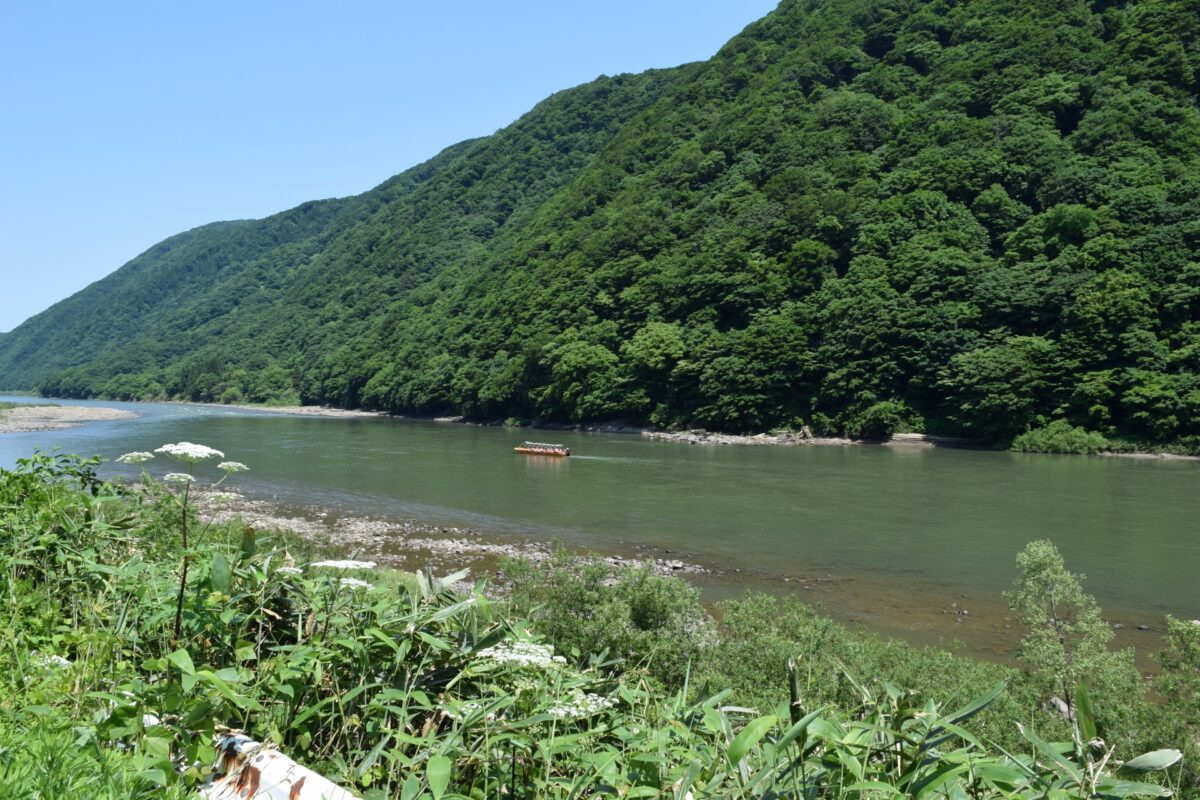
Matsuo Basho arrived in Oishida, Yamagata Prefecture, in late May. Oishida is a town located in central Yamagata Prefecture, with the Mogami River running through it from north to south of the town. In this Oishida, surrounded by water and greenery, Matsuo Basho hosted a haiku gathering. There, Matsuo Basho composed this haiku.
五月雨を 集めて早し 最上川
Samidare wo Atsumete hayashi Mogamigawa
(Meaning: How fast the Mogami River flows, as if it collected raindrops of May (rainy season) that has been falling.)
A single drop of rain is nothing, but when many of them gather together, they become heavy rain, which makes the river flow faster. This simple and emotional haiku expresses Matsuo Basho’s unique view of nature.
Risshaku Temple
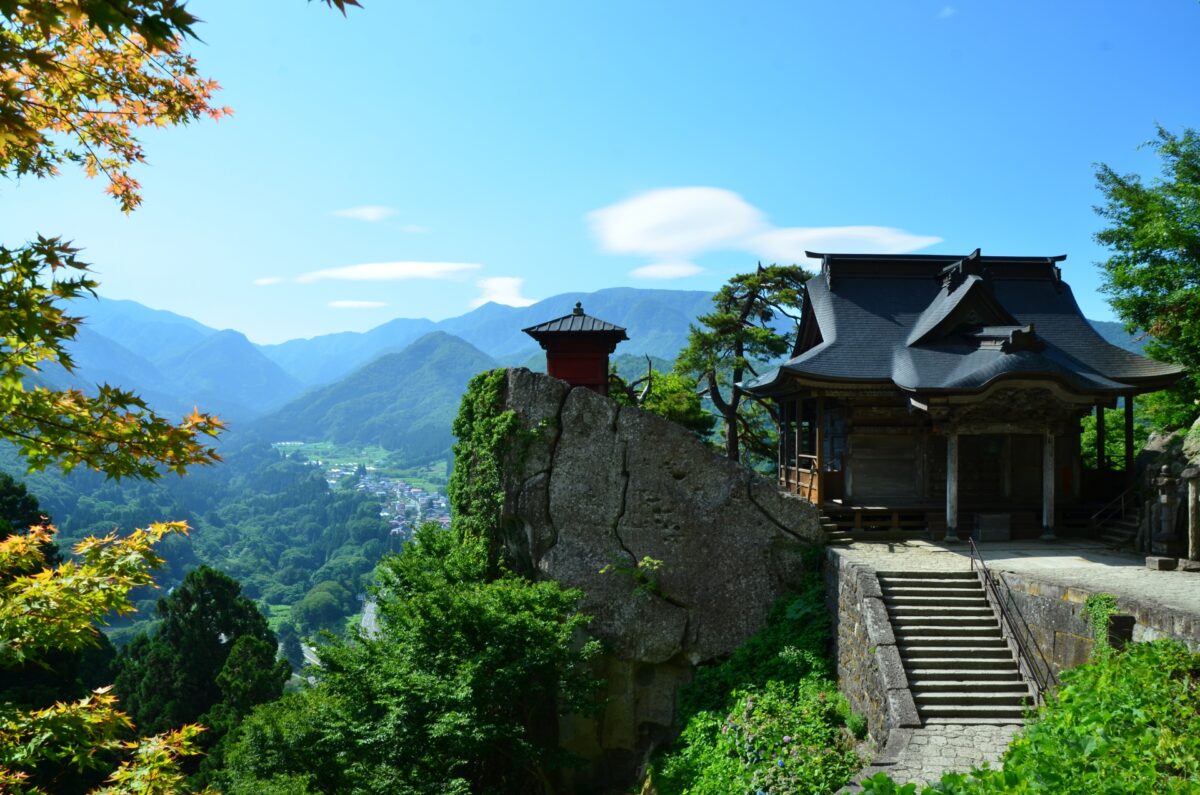
Lastly, let’s take a look at Rissyaku Temple, also in Yamagata Prefecture. Matsuo Basho arrived here in late May and loved the lush nature and quietness of early summer at Rissyakuji Temple. Here is a poem that Matsuo Basho composed there.
閑さや 岩に染み入る 蝉の声
Shizukasa ya Iwa ni shimiiru Semi no koe
(Meaning: How quiet it is around here, so quiet that the cicadas’ chirps seep into the surrounding rocks.)
In contrast to a haiku written on the Mogami River in the same prefecture, this haiku focuses on the “quietness” of nature that makes us admire it. The mere reading of this haiku evokes for us the image of sitting on a rock around a temple with only the cries of cicadas echoing in the abundant nature, and we are left feeling at peace. It is known as one of the most famous haiku poets in Japan now.
Matsuo Basho traveled all over Japan to enjoy the beauty of the country, and his experiences led to the creation of many wonderful haiku. Of course, Matsuo Basho’s charm does not stop with Oku no hosomichi. When you come to Japan, it’s recommended for you to travel around the country as Matsuo Basho did. Each place has its own beautiful scenery and will surely touch your heartstrings. Let’s experience the beautiful scenery of Japan that he loved so much.
Japan Wonder Travel Tours
Japan Wonder Travel is a travel agency that offers guided tours throughout Japan.
From private walking tours to delicious Food and Drink tours, we can help you organize the best tours just for you! If you want to explore Japan and learn more about the history and backstories of each area you are visiting, our knowledgeable and friendly English speaking guides will happily take you to the best spots!
In addition, we can provide you with any assistance you may need for your upcoming trip to Japan, so please feel free to contact us if yu have any questions or need some help!
▶Tokyo Tsukiji Fish Market Food and Drink Tour
Explore the most lively and popular fish market in Tokyo and try some of the local’s favorite street foods and sake with one of our friendly and knowledgeable English speaking guides!

▶Tokyo 1–Day Highlights Private Walking Tour (8 Hours)
There’s no better way to explore an area than taking a tour with a knowledgeable local guide. You will have the chance to learn about the history and interesting background stories of Tokyo, as well as discover some hidden gems which can be hard to do without a guide.

▶Mt. Fuji Day Trip Bus Tour from Tokyo
Experience the breathtaking views of Mt. Fuji by visiting the highlights of the area on our guided sightseeing bus tour! Departing from Shinjuku in central Tokyo, you can travel comfortably to all of the best spots in the area by bus.

Follow us on Instagram, Facebook, Twitter, and TikTok for more travel inspiration. Or tag us to get featured!
Happy traveling!
